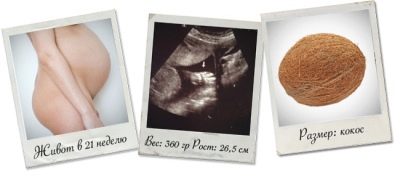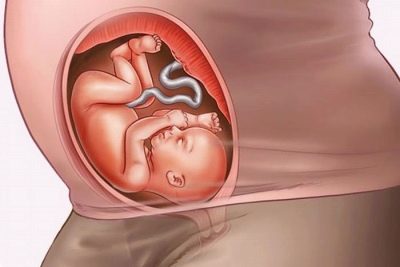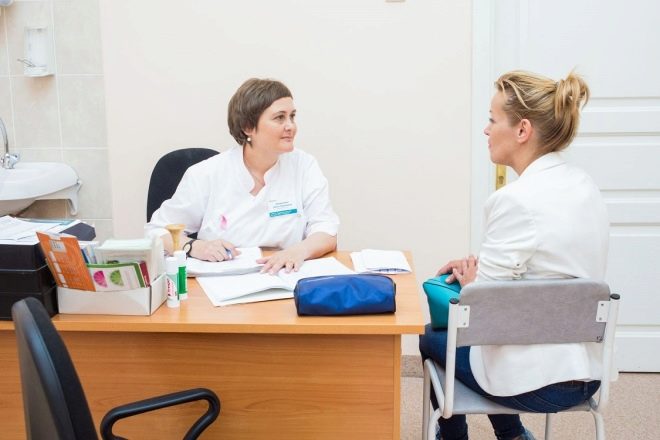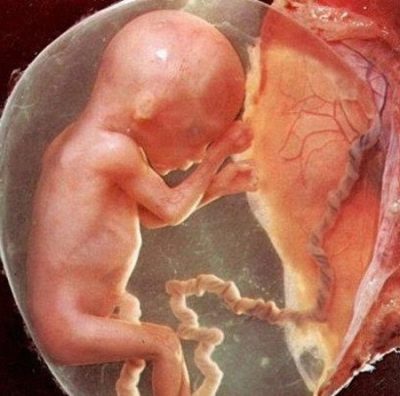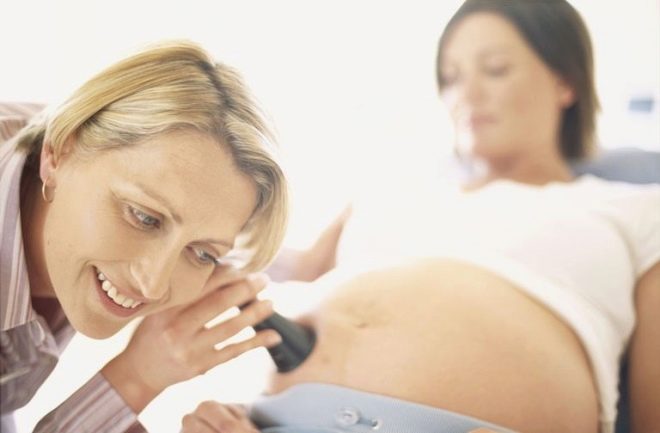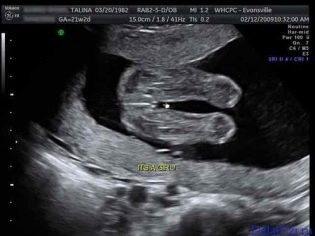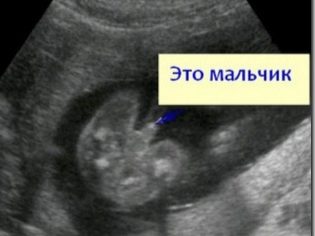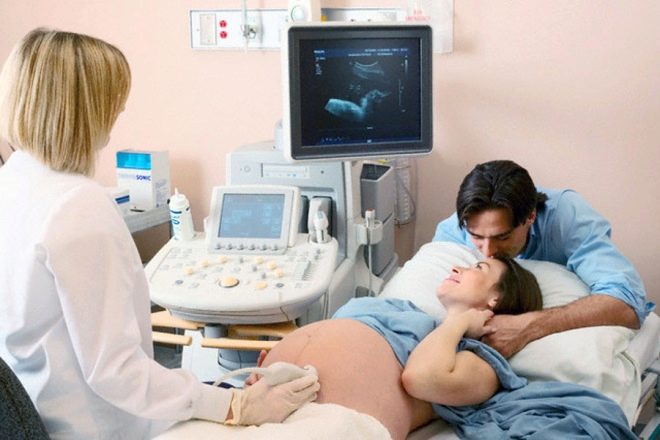21 weeks of pregnancy: what happens to the fetus and the expectant mother?
At week 21, a woman enters the second half of her pregnancy. This period will not be the easiest: the closer to the date of birth, the harder it will be to wear the baby at heart. To gain strength before the "finish line" is necessary right now, when both state of health and state of it still allow. What happens 21 weeks of pregnancy for the baby and his mother, we will tell in this article.
How many months is it
If a woman started 21 weeks of pregnancy, it means that the sixth obstetric month has started. In the usual calculation of time, 4 months and 3 weeks passed. Pregnant women rather quickly get used to measure time by obstetric months: they differ from the calendar in that in each of them - exactly 4 weeks and not a day more.
The entire pregnancy in obstetric measures lasts 10 months or 40 weeks. Now the second half of the gestation period has begun.
From the conception of the baby, the 19th week began - the period is solid, and the fetus has already achieved great success in its development. Since the delay and the first "striped" test, about 17 weeks have passed. It sometimes seems to a woman that this was quite recent, and she has a long time to be pregnant. In fact, in the second half of pregnancy, the time, according to the subjective feelings of future mothers, flies much faster. Now, each passing day is rapidly approaching a meeting with a new little man - a son or a daughter, and maybe with two or three children at once.
On this date, a lot of interesting things happen to the future mother and her baby. Let's talk about this in more detail.
Feelings and feelings of women
Pregnancy is no longer possible to hide even the most spacious clothing. The tummy, which has already been fairly well rounded, is clearly visible to everyone around. While the pregnancy is still not very strong for the future mother, her state of health in general remains quite good and easy, but some moments are already beginning to manifest themselves, which cause inconvenience to the woman and cause many questions.
Fetal movements
By week 21, only the smallest percentage of women who are pregnant with their firstborn does not feel the movement of her baby. About 93% of future mothers in this period are already enjoying new sensations and making full contact with the crumbs. It is proved that the baby can tell a lot about the motor activity - that it is uncomfortable, boring, and requires communication. The faster a woman learns to understand the baby and his language of movement, the easier it will be to navigate further.
At 20-21 weeks of perturbation feel all women who have already had to give birth, all pregnant with twins and triplets, almost all primiparas. But there are those who still await the appearance of amazing sensations.
If the movements are not yet felt, do not worry. Until 22 weeks, which is determined by doctors as the ultimate for sensation of the first movements of the baby, there is still time.
Some of the inexperienced primipara women actually feel perturbations, but cannot understand this, mistakenly mistaking them for intestinal motility, for boiling in the intestine and fermentation of intestinal gases. The first movements - a very subtle sensation, according to expectant mothers, resembling a light touch of a fish's fin or butterfly wing from the inside. It is harder to notice it for women who lead an active lifestyle, are constantly on the move and are busy with something all the time.
Fat women later begin to feel the movement of the puzozhitel, whereas slender ladies feel them earlier.
Now it’s not necessary to count the movements of the baby, the woman will deal with it later. But mentally celebrating episodes of movement is still necessary in order to understand that the baby is fine. Until the formation of the brain of the crumbs is completed, the movements are uneven, arbitrary in nature, it will not be possible to reveal any definite pattern. However, now many pregnant women note that their sons and daughters are more active at night.
In fact, this is not entirely true statement. The baby moves at about the same intensity both at night and day.. Just during the day, mother walks, does things, sometimes does not feel movements, and at night, when the whole body is relaxed, more sensations appear and their character becomes brighter.
Especially painful women perceive situations in which the baby little and rarely makes itself felt. If there are concerns, you should definitely tell the doctor about them: in his arsenal there are many ways to find out if everything is fine with the crumbs.
But do not forget about temperament: now little boys and girls can be more or less active by nature. They will remain so after birth: some babies sleep well and calmly behave in wakeful periods, while others are in a hurry to know everything, are constantly in motion.
Allotment
At the beginning of the 21st week of pregnancy, a woman may notice that from time to time she has a feeling of constant humidity in the crotch area. This is not considered a pathology and a reason to sound the alarm. Increasing the amount of vaginal secretions is a normal reaction of the female body to several factors, including changes in the hormonal background that accompany the process of carrying a baby, stretching the ligamentous apparatus that holds the growing uterus.
Vaginal secretion is necessary to maintain a balance in the composition of the microflora of the genital tract.
therefore light discharge without a strong odor is the norm. Leukorrhea is also considered normal - the formation of whiterie white or slightly yellowish discharge with a slight sour odor. The physiological phenomenon has its peculiarities: the vaginal secretion is a good medium for the reproduction of pathogenic microorganisms and fungi. In order to prevent the accession of infection and inflammation, it is now important to pay special attention to intimate hygiene.
When washing it is not necessary to use toilet soap, because alkali in its composition can lead to excessive dryness, you should not wipe the intimate area with a hard towel, because now the skin and mucous membranes are most susceptible to injury.
A woman should wear absorbent sanitary pads “daily”, regularly change them. Such hygiene products will help to control changes, because the color and consistency of discharge is clearly visible on them. Immediate treatment to the doctor requires excretion, which became green, gray, brown. Usually they are associated with the appearance of an unpleasant smell and itchy sensations in the crotch area. Such secretions are often a sign of an infectious disease.
White thick discharge, the consistency of granular cottage cheese, associated with itching and unpleasant burning, can be a sign of thrush. For many women, this disease accompanies the entire pregnancy, becoming more acute from time to time. To treat thrush during pregnancy must be in order.
The most dangerous - blood discharge. Even a slight pink or brownish discharge from the genitals can be a sign of placental abruption, problems with the condition of the cervix.
Pain sensations
Pain during pregnancy at the current time can be both physiological and pathological. Distinguish one from the other is not so difficult. On the pathology can speak sharp, nagging and severe pain, having a cramping character. They are usually accompanied by a deterioration of health, the appearance of discharge, which are not considered normal for a given period.
Episodic weak pain sensations are completely physiological. The uterus grows. To hold it, the ligaments and muscles have to adapt to the new reality, the ligaments become more dense, they are noticeably increasing in length. This process is in one way or another accompanied by weak soreness and “slackening” in the left and right side (in the right, according to women, much more often). Also, future mothers begin to feel that the backache hurts, pulls back.
Such pains are not permanent. Usually they appear after a woman has spent a couple of hours at the stove in the household chores, if she has been sitting in one place for a long time, standing or walking on foot. Also, in the evening, a woman can feel that her knees are aching, there is heaviness in the feet. The legs ache because of the load on the limbs, because the uterus, the fetus, the amniotic fluid, the placenta and the woman’s own weight, which are noticeably older, have to be “worn” by the legs.
The woman herself still hardly thinks about the upcoming birth, but her body begins to prepare for it in advance.
Now some women may experience pain in the sacrum and pubic bone. It usually manifests itself when climbing stairs, with intensive walking, as well as when trying to get up from a lying or sitting position. If this pain does not limit movement, then the woman just needs patience: the pelvic bones soften, become more mobile, and disperse in order to help the baby in due time to leave the cozy mother's womb and emerge into this light.
Severe pain that prevents a woman from sitting or walking, aggravated at night, is a reason for a visit to the doctor. It is possible that the start of such an unpleasant, but, alas, not infrequent affliction, like a symphysis.
Headaches in week 21 happen less frequently than in the first trimester. The hormonal background has changed, the amount of blood has increased. If the head hurts with enviable regularity, if headache attacks are localized in the occipital and temporal parts, if there are nosebleeds, the pregnant woman should definitely pay attention to the level of blood pressure. She may have hypertension, and this is very dangerous for the mother and baby.
Short-term "lumbago" in the perineum, which women often compare with current shocks, at the current time may be due to the fact that the uterus passed certain nerve endings and important nodes. Feelings are not the most pleasant, but not dangerous for the child. To get rid of them, you just need to change the position of the body, walk. Nervous nodes will be “released”, and “shooting” will stop.
Emotional and psychological states
The mood and well-being of future mothers in this week remain fairly stable. For most women, the main tests and examinations were left behind: both the first and second screenings were passed, and the anxieties diminished. The probability of spontaneous miscarriage is no longer a frightening threat, because such a probability at 20-21 weeks is negligible. The woman has become completely accustomed to her own new position. Even if she is still not very well aware of what her life will be after the birth of the crumbs, there is almost no cause for alarm.
Psychologically pregnant in the middle of the second trimester feel quite comfortable. The difficulties of the first trimester with its toxicosis and constant balancing between laughter and tears are in the past and have already been forgotten. I don’t want to think about the difficulties of the final period of pregnancy.
Moms enjoy socializing with their babies, because they are already responding to their hands on their stomachs, they can respond to their mom's song with soft and gentle movements.
But not everything is so rosy, in any case, psychologists say so. In the middle of the second trimester, many expectant mothers turn to them for help, because right now there may be problems in the relationship between a woman and her relatives. Experts say that the reason lies in the unsatisfied instinct of security. To make a woman feel perfect, she needs to feel that she is under reliable protection.. Alas, the husband does not always have time for this, because now he is puzzled by other problems: he is already thinking how to provide for the family, which will soon be added.
A woman’s unmet need for security is manifested at the instinctive level, almost unconsciously. Right now she can begin to find fault with her husband on trifles, take offense at him, consider that he does not pay attention to her at all. All this leads to conflicts in the family. You can avoid them if you understand why they occur.
A psychologist who today is in every antenatal clinic will help a woman to understand herself. Reception is free of charge.
Changes in the body
Almost all organs and systems of a pregnant woman undergo certain changes. If earlier the changes were hormonal in nature that were invisible to the eye, now they are completely obvious. The uterus becomes so large that all the neighboring organs, as well as the heart, vessels and kidneys, feel this. The processes that are now taking place in the female body have one goal - to create the most comfortable conditions for the baby, which soon will not have enough space in the uterus.
Uterine dynamics
The height of the bottom of the uterus now has an important diagnostic value. It is his centimeter tape measures obstetrician-gynecologist at each scheduled reception. If in the first half of pregnancy this size was rather subjective, since it depended on the anatomical features of the woman herself, now, after the 20th week, it should be approximately equal to the gestational age in weeks.
In other words, at the 21st week of pregnancy, the normal height of standing of the uterus (upper part) is 20-21 centimeters. Since the size of the pelvis in women is different and the composition varies, as the norms take the average values. For week 21, VSDM can be considered normal at values ranging from 18 to 24 centimeters.
However, the doctor should assess compliance with standards, because a thin woman at 21 weeks with a height of the uterus at 24 centimeters, the doctor can assume the presence of a large fetus, and for a full mom with the same period, the same height will not indicate a tendency to large toddler.
The length of the cervix at this time in the normal range from 4 to 4.5 centimeters. Shortening it may qualify as a sign of late cervical insufficiency. To reduce the risks of preterm labor, the doctor may recommend an obstetric pessary, representing a ring of silicone, fixing the neck in a stable position and not allowing it to open ahead of time.
The uterus is now the size of a football. For all the time of pregnancy, this body grows 500 times the original size. The length of the muscle fibers is increased five times. Now the uterus is about 55% of its size, but in the last weeks of pregnancy.
The uterus is in the abdominal cavity, this week its bottom has become equal in level with the navel line. The navel itself may begin to protrude, stick out.
Weight gain
Weight gain at week 21 is inevitable. There are no women who would inform their offspring to this date and would not add kilograms. Another question is that by the time of 21 weeks some people manage to gain 12-15 kilograms, and this cannot be considered a normal phenomenon.
To accurately understand whether the weight gain is correct, you need to know your body mass index before pregnancy. It is derived by the formula "Weight divided by height squared." For women whose index did not exceed 18.5, that is, slender women with a slight underweight, by the 21st week they are “allowed” to gain from 6 to 6.6 kilograms. This will be a completely normal increase.
Women whose body mass index before pregnancy was from 18.5 to 25, that is, women with a normal weight or a small excess, as an increase to this period, 6.4 kilograms (maximum) are considered to be the norm. For women whose body index indicated obesity prior to pregnancy, an increase of 20-21 weeks should not be more than 3.1 kilograms.
Weight should be monitored very carefully, since its unmotivated and sharp growth may be the only symptom of the onset of such a dangerous pregnancy complication as gestosis. It is recommended that a woman be weighed now once a week on the same day.
Training bouts
False contractions, which are popularly called training, and in medicine - Braxton-Hicks contractions, can begin with a woman this week. They are not harbingers of childbirth or signs of labor, they do not lead to the opening of the cervix, and therefore do not pose any danger.
They are manifested by the tension of the smooth muscles of the uterus, small pulling sensations in the lower abdomen and in the lower back. Many women compare them with sensations in the period of menstruation. Pregnant without experience of such contractions can be alarmed, but only at first. Then women get used to training uterine contractions.
If you lie down, take a rest, take a warm shower, such false labor usually retreats. They appear rarely and irregularly. In the overwhelming majority of pregnant women, they appear closer to the third trimester, in multiparous ones - a few weeks before the date of delivery.
Only a small number of expectant mothers begin to feel Braxton-Hicks contractions after 20 weeks of gestation. No treatment is required for a woman. About the presence of false contractions, you must notify the attending physician.
Arterial pressure
At week 21, the weight of the heart muscle in a woman increases somewhat, which is associated with an increased load on the organ that supplies the whole body with blood. Now, in addition to the large and small circles of blood circulation, which are in the body of any person, a pregnant woman has another circle - the placental.
The blood circulation between the uterus and the placenta, as well as the placenta and fetus, is very intense, up to half a liter of blood can pass through it within a minute. In this regard, the blood pressure on the walls of the blood vessels of a pregnant woman can be somewhat reduced.
The decrease, if you look at it in numbers, is quite tangible - by 4-5 mm. Hg st decreases systolic pressure by 15 mm. Hg St - diastolic. And the pulse increases by 10-15 beats per minute, and this is also completely normal.
For the most part, nature has provided for compensatory mechanisms, and a woman does not so often feel a decrease in blood pressure during the period of gestation. However, there are exceptions.
If hypotension was always peculiar to the expectant mother, then right now she may begin to experience bouts of dizziness, nausea, episodes of loss of consciousness. In this case, she needs supportive treatment, which will be prescribed by the doctor who is leading the pregnancy.
Chest
Most pregnant women are very satisfied with the size of their breasts at this time. Lush, beautiful, sensitive breasts are appreciated by the second half of expectant mothers. Usually in the middle of the second trimester severe pain, burning, aches in the mammary glands are not disturbed by a woman. The main growth rates of glandular tissue occurred in the first trimester, and now the processes in the chest have slowed down a bit, but they have not stopped completely.
That is why the chest can still change. The appearance of dark spots, tubercles on the nipples should not be confused. All these cosmetic manifestations of internal processes will pass after childbirth.
Colostrum at week 21 should also not be alarming. The liquid excreted from the nipples of a woman is a prototype of the future breast milk. Previously, those who have given birth and breastfed colostrum appear more often than women, who are going to become mothers for the first time.
It is not recommended to squeeze the colostrum because the stimulation of the nipples produces the hormone oxytocin, which causes the uterus to tone. It is quite enough to care for your breasts: use cosmetics for stretch marks, wash the mammary glands with warm water twice a day, and also wear a comfortable and practical bra with wide straps.
Fetal development
For the first half of pregnancy, the baby has come a very long way. He was a cluster of crushing cells - an embryo. From the 8th week it began to be considered a fruit and it is now.
Starting from week 21, the baby will continue to develop, but the “momentum” will slow down somewhat, its growth will no longer increase as rapidly as it did before. Of course, future mothers, regardless of what their pregnancy counts, are very interested to know what the baby looks like now and what he can do. We will talk about this in more detail.
Appearance
Now the length of the crumb grows more slowly, but its weight begins to increase. The growth of the baby at 21 weeks gestation is 24-28 centimeters, it weighs almost 400 grams, and these sizes are quite comparable with the size of a small doll. Externally, the crumb noticeably prettier: his skin is no longer red or purple, sweet on her begin to gradually smooth out.
The frightening thinness disappears, the stomach, arms and legs begin to “overgrow” with pleasant roundness. All these changes are becoming possible due to the fact that subcutaneous fat is now in full swing. It not only changes the appearance of the baby, but also helps its internal organs to keep warm, performs thermostatic functions.
The kid is now thickly covered with greyish cheese-like grease. It is needed in order for the crumb to maintain the desired temperature, as well as to protect its delicate skin from the amniotic environment in which it has been swimming for five months (and there are still as many to swim in it). So that the original lubricant does not disappear anywhere from the skin, on it grow fluff hair - lanugo, which hold it.
And lanugo, and grease will gradually disappear. By the time of birth, the baby will get rid of them completely, although sometimes babies are born with lanugo that does not completely disappear, and then the thin blond hair on the skin gradually disappears in the first weeks after birth.
In the guise of your child now appeared more proportionality: the head, although the largest part of the body, no longer makes up half the area of the whole body. Closer to childbirth, it will be in proportionate terms to about one-fifth, while for the head accounts for about a quarter of the whole body.
Noticeably grown limbs. Hands and feet became proportionate. The fetus's tummy has grown considerably, and now the baby makes a more pleasant impression: it is already becoming like a newborn.
The face of the baby, his neck, fingers, nails and even fingerprints are already fully formed. Cilia and eyebrows have grown, there are even hints of dimples on the cheeks and chin if they are destined to appear there due to the genetic characteristics of the child’s appearance.
On a three-dimensional ultrasound at this time one can easily see who the child looks like, because the characteristic features of his appearance are already being determined.
Nervous system
At this time, it is the nervous system that undergoes the most extensive changes and metamorphoses. Its formation continues every minute, even if the baby is dormant. Hundreds of thousands of nerve cells - neurons - are formed every second.It is now that simple and complex neural connections are being established that ensure the functioning of the nervous system as a whole and its individual components in particular.
In the brain, the growth and development of the cerebral cortex continues, the convolutions and grooves are formed with unprecedented speed. The crumb becomes more "clever", in any case, at the physical level, this is easily determined by how well he learned to master his pens and head. The central nervous system gradually takes control of all parts of the body of the crumbs, all organs and systems.
The “debugging” of reflexes continues: the crumb sucks, swallows, grabs what is in the area of the palms. Recent studies have shown that now it is 100% determined and clear whether the child will be right-handed or left-handed. Those who are destined to be right-handed (the overwhelming majority of them) now prefer to suck on the thumb of their right hand, while left-handers prefer the fingers of their left hand.
The activity of the centers responsible for speech perception is recorded in the baby’s brain. Such activity in the temporal and frontal lobes is manifested in moments of mom listening to loud music, especially if the headphones are placed directly on the stomach, “sending” a sound signal inside.
One can argue endlessly about whether the fruits of this period see the dreams and whether they have a soul. There are many opinions. Obviously one thing - the development of the nervous system allows the crumbs not to miss: he learned to yawn, hiccup, spit, suck his fingers, play with the umbilical cord, catch himself by the leg and push it into his mouth and this is not a complete list of all the skills of the puzozhitel.
Internal organs
In the development of internal organs, nothing new happens at week 21. All bodies are formed, they grow and gradually master their functional "duties". The stomach takes the amniotic fluid, digests the small particles that they have.
Particles of the epithelium and lanugo are not able to digest it, they are sent unchanged to the intestine, where they are deposited as the original feces "meconium". The dark green color of meconium attaches to bile, which is already being produced by the gallbladder, and a part of which enters the intestine.
The heart and muscles of the crumbs already partially obey the nervous system. In moments of wakefulness, the baby's heart rate increases, it moves more actively. But at least 19-20 hours a day, the baby is in a state close to sleep, at this time his heart knocks more measured, and movements are rare and involuntary. The heart rate at this period is normally 146-168 beats per minute.
The baby already has passive (maternal) immunity, begins the formation of its own immunity. There are leukocytes in the fetal blood, there are many of them, but they are still immature.
The kidneys, liver, bladder work normally, the endocrine glands function. The kid swallows more than 500 ml of amniotic fluid per day, pissing every 40 minutes or an hour.
Sense organs
Most babies to 21 obstetric weeks form a clear picture of the time of day, a certain frequency of changing darkness and light. Some kind of regime of the day begins to be produced. It will not necessarily coincide with the mother, although by the end of the pregnancy the baby usually begins to “adapt” to the mother.
The kid continues to discover the world of big sounds. Previously, he focused on the vibration created by sound waves, now all departments of the hearing organs have completed formation, the baby was able to perceive the sound as we hear it as adults. Of course, it is necessary to make an amendment to the thickness of the abdominal wall of the mother, to the amount of amniotic fluid, which "conceal" some of the sounds from the outside world. The rest of the baby hears.
He loves his mother's voice and the sound of her heart; many crumbs at this time recognize his father's voice.From noisy places, big concerts with a loud sound, now it is better for a woman to stay away: too loud unfamiliar sounds scare the kid.
Your child is learning to blink. The corresponding reflex is now being formed, and very soon it will begin to open its eyes. He distinguishes features of tastes: water can be sweetish, if mother ate sweet, and brackish, if she ate pickled cucumbers. The children are already appreciating the sweet waters and frowning disgruntled faces from sour and bitter tastes.
Sex determination
At 21 weeks of pregnancy, sex determination is not difficult. And it is not at all necessary to do an ultrasound scan with the most highly qualified specialist, on precise modern equipment. Even an old scanner in the local antenatal clinic will almost unmistakably help the doctor determine whether to wait for a boy or a girl.
The external genitalia are fully formed, the child’s gender cannot be doubted, but only if he “wants” to show his “charms”. Some babies stubbornly don’t want anyone to look at them, and therefore turn back to the scanner, hide the penis between the legs, and then parents can mistakenly “predict” the birth of a girl. The girls are also “with fantasy”, they clamp the umbilical cord so tightly that its rings very much resemble the penis, and then the parents will be mistakenly informed about the soon birth of their little son.
In fact, the probability of error in determining sex in week 21 is less likely than in any other period.
Previously, the probability of an error increased due to small genitals, the child would later “curtail”, it would become cramped, and a review of the genitals could become inaccessible. Now, the accuracy of sex determination by ultrasound is approaching 90-95%.
In boys, the testicles on this period began to migrate to the small pelvis, in order to then start moving to the scrotum from there. In girls, the sex glands are already located in their places in the pelvic area.
Your baby on ultrasound
Ultrasound on this obstetric week may be the second planned. The deadline for the passage of the second in a row prenatal screening ends. If a woman in the second trimester has not yet been in the ultrasound diagnosis room, now is the right time for this.
In addition to the mobility of the baby, the mother will be able to see his heart on the monitor, which knocks very intensely. The diagnostician will make basic measurements of the baby’s body parts. The so-called fetometry of the fetus is a complex of important dimensions that allow you to add an idea of the proportionality of the child and the rate of his growth. For the period under consideration, such parameters are characteristic.
Fetus size chart for week 21
BPR, mm | LZR, mm | OG, mm | Coolant, mm | DBK, mm | DKG, mm | Forearm length, mm | Shoulder length, mm |
48-51; (45 - 56 mm) | 62-66; (57 - 72 mm) | 170-183 | 144-157 | 33-36; (from 29 to 40 mm) | 30-33; (from 26 to 37 mm) | 26-28; (from 22 to 32 mm) | 30-33; (from 26 to 37 mm) |
Pelvic, transverse presentation of the fetus should not yet inspire fears to the expectant mother, because the baby is spinning and spinning actively, its position relative to exiting the uterus before delivery will change again and again.
Possible complications and dangers
If something unexpected happens now and the baby is born, he most likely will not be able to survive. Its weight did not reach 500 grams, and the gestation period had not yet crossed the mark at 22 weeks, after which the fetus is considered a child. Now the birth of the baby will not be considered premature birth, it will be a miscarriage. Therefore, you need to make every effort to prevent such an outcome.
This week, a woman may experience the first signs of late toxicosis, called preeclampsia, which is characterized by edema, high blood pressure and protein in the urine.
If the face “swims” in the mornings, it is impossible to put on your favorite rings on your fingers, and worn-out little old shoes begin to reap, these are the first signs of edema. This is a must-inform physician.
Immunity of the pregnant woman is reduced, this mechanism is necessary for the body to “reason” the immune defense, not to let it get rid of the child in the early stages. Now the decline in protective functions has reached its maximum, so the woman is virtually defenseless against viruses, bacteria, fungi and other pathogens. Even the common cold can give her a lot of unpleasant symptoms.
You should not be afraid of panic in this period. The placenta already reliably protects the baby, the consequences for it will be minimalBut it is better to avoid illnesses by all means, since an extra burden on the pregnant woman’s body is not welcome.
Hypertonus, which can also be diagnosed, is the pathological tension of the smooth muscles of the uterus. This phenomenon can occur with women who are very nervous, are in adverse social and psychological environments.
Both hypertension and increased physical activity can cause hypertonus. That is why it is important to comply with all recommendations, to pass tests in time and in no case do not refuse treatment prescribed by a doctor, if it is necessary.
Analyzes and surveys
At week 21, the second prenatal screening is completed, more precisely, one of its components is an ultrasound examination, because a blood test in this antenatal study women usually pass earlier - from 16 to 19 weeks of pregnancy.
If the results of the screening are good, then so far no further tests will be assigned to the expectant mother. If the screening conclusion does not inspire optimism to the doctors, then the woman will be given amniocentesis or cordocentesis - procedures in which umbilical cord blood or amniotic fluid is extracted from the uterus with a thin needle.
Those who do not want to risk the health of the baby, and invasive diagnostics, which include cordocentesis and amniocentesis, are quite dangerous and traumatic, can be recommended non-invasive prenatal DNA test for maternal blood, but its cost is high enough.
At week 21, women who go to the doctor’s office need to remember to pass a general urine test, and now special control will be established for the condition of the kidneys and urinary system of the woman.
Recommendations to the future mother
The list of general recommendations for pregnant women, which include walks in the fresh air, a healthy lifestyle, taking vitamins and a balanced mode of work and rest, At week 21, the following tips are added.
Gymnastics. If a woman has not yet started doing special gymnastics for future mothers, now is a great time to master these simple and very useful exercises that will prevent excess weight. Weight will now grow faster, and without physical activity, an increase can become pathological.
Sex. You can have sex, if the doctor does not have a different opinion on this matter. At week 21, women experience a surge of sexual energy, intimate relationships can bring a lot of pleasure to partners. However, one should pay more attention to the choice of postures, avoiding mechanical compression of the abdomen and too deep penetration.
- Nutrition. Due to the fact that the baby began to gain weight intensively, now the woman should increase the caloric content of the daily diet by about 500 Kcal. The daily need of the future mother on this period is now 2800-3000 Kcal. To get calories should not be from sweets and chocolate, and especially not from fast food. You can add cereals, increase the fat content of dairy products, add another meal with vegetables and fruits.
Clothes and shoes. At home, it will be useful for a woman to be barefoot, and it’s better to go outside in shoes with flat shoes. Clothes should not be tight, hamper breathing, promote sweating. To do this, choose a model of natural fabrics.
- Shopping for baby. Now a woman can still afford to go shopping, a little later shopping will be very difficult. If you want to buy beautiful suits, vests and hats for the crumbs, then it is best to do it right now, when the stomach is not too much constraining movements, and the weight allows you to walk for a long time and not get tired.
Toilet and intimate hygiene. Do not sit in the toilet for a long time. Defecation at this stage of pregnancy should take no more than five minutes. Otherwise, the likelihood of developing such an unpleasant and very painful ailment as hemorrhoids dramatically increases. Watch out for food, do not allow constipation.
After defecation, do not use toilet paper, but water - rinse and change the daily sanitary pad.
Reviews
According to reviews of future mothers, at 21 weeks, heartburn and frequent urination are among the most common complaints. The growing uterus presses down on the stomach, which causes the gastric juice to be thrown back into the esophagus. Frequent visits to the toilet are associated with the pressure of the uterus on the bladder and kidneys. These unpleasant symptoms should simply be relived, gradually the woman will become better: the compensatory mechanisms of the human body are large enough, and the woman's body tends to gradually adapt to the growth of the uterus.
Many future mothers note that at week 21, their appetite has noticeably increased. Some of the pregnant women now, while the forces allow, try to catch the seas. Doctors caution: be careful with sunbathing.
About what happens to the fetus and the future mother in the 21st week of pregnancy, see the next video.



